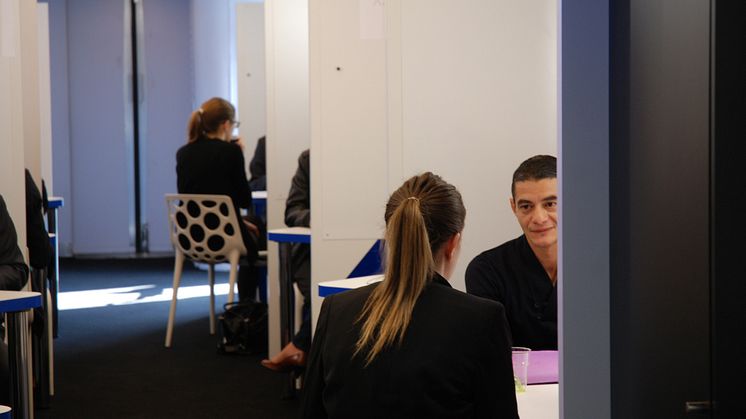
Blog post -
Addressing the employment and social consequences of mobility and migration
Eurofound has been doing extensive work on the issues of mobility and migration. This blog gives a brief overview of the different aspects of EU mobile workers, posted workers and third-country migration, as well as a preview of our upcoming research.
Free movement in the EU
All citizens of EU Member States are entitled to live, work and study in another Member State. The right to free movement derives from the concept of EU citizenship, which was laid down in the Maastricht Treaty (the Treaty on European Union) of 1992.
Certain rules and conditions qualify this right, however, depending on the status of the individual.
- Workers and their immediate family members have the right to reside in another Member State without any conditions or formalities.
- Job-seekers have the right to reside without any conditions for a period of six months and even longer if they continue to look for work and have a ‘genuine chance’ of securing it.
- Individuals who are not economically active – including students, retirees and unemployed people – can reside without conditions for three months. After that, they can continue to reside if they have sufficient financial means so as not to become a burden on the host country’s social assistance and health systems.
Over 14 million EU citizens live in a Member State that is not their home country. In EU communications, these are known as ‘mobile EU citizens’. Those who settle at least semi-permanently in the destination country can be considered as internal migrants within the EU.
EU mobile workers
Most mobile EU citizens avail of free movement in order to work. Free movement of workers is a pillar of the single market and has been a principle since the beginning of the European project, set down in the 1958 Treaty of Rome. EU law establishes their right to equal treatment regarding access to employment, pay, working conditions and certain social benefits.
The main internal migration flow within the EU is from east to west; workers from the central and eastern European Member States are attracted by the availability of work in the pre-2004 Member States (the EU15), as well as the higher pay and better working conditions. Nevertheless, mobility overall is low and has always been so, even during the pre-crisis economic boom, something the European Commission is committed to changing.
The Commission considers intra-EU mobility to be a means of addressing demand for skilled labour and tackling bottlenecks in filling vacancies, thereby contributing to economic growth across the Union. The Europe 2020 flagship initiative ‘An agenda for new skills and jobs’ identifies labour mobility as one of the means to ‘modernise labour markets and empower people by developing their skills throughout the lifecycle with a view to increase labour market participation and better match labour supply and demand’. A labour mobility package is forthcoming, with the aim of supporting the movement of workers while dealing with abuses.
Analysis of recent trends in labour mobility between Member States shows that the economic crisis temporarily stalled mobility as unemployment spiralled across the EU15. At the same time, the crisis did not lead to the expected mass return of mobile workers to their home countries. Movement of workers across borders rebounded quickly once the peak crisis period had passed, although mobility rates remain lower than before the crisis.
Posted workers
A separate group of workers who cross borders within the EU are posted workers, who are employed in one EU Member State but sent by their employer to work in another Member State on a temporary basis. Posting has grown as a result of the transnational provision of services but has given rise to concerns about working conditions and social dumping, the practice of employers hiring migrant workers to work more cheaply than local workers. The Posting of Workers Directive aims to tackle these issues. Eurofound has examined the extent of posting of workers in Europe, including the role of EU and national legislation and collective bargaining in determining the employment and working conditions of posted workers.
Third-country migration
In the context of the EU, third-country migration refers to the movement of non-EU nationals into the EU – this includes refugees and asylum seekers, as well as those migrating for other reasons. The Commission’s new European Agenda on Migration outlines the EU’s immediate response to the migration and refugee crisis in the Mediterranean.
In the medium term, it also aims to develop a new policy on legal migration, recognising that migration has to be part of the EU strategy to address shortages of specific skills and the challenges presented by demographic ageing. Integration of third-country nationals is a challenge for Member States, especially given the frequent mismatch between these migrants’ skills and the labour market needs. Member States that have the best outcomes have been found to be those that focus on coordinating integration and labour market policies from the outset.
Integration
Many of the challenges of integration are dealt with at the local level, where cities and local authorities have a central role in implementing integration policies and in developing innovative approaches to housing, education and cultural diversity.
Between 2006 and 2010, Eurofound carried out a series of projects with a network of 30 European cities to support local integration policies for migrants (CLIP). This network aimed to deliver more effective integration policy through the structured sharing of experiences. The project resulted in recommendations for local, national and European policymakers in four policy areas: housing and integration of migrants; equality and diversity in jobs and services; intercultural policies; and ethnic entrepreneurship.
Concerns around mobility
In promoting intra-EU mobility, the Commission simultaneously supports Member States in fighting abuse of the right to free movement. One such abuse is social dumping, noted above. Most EU15 Member States have implemented policy measures to prevent social dumping. Some have introduced intensified tax, wage and work environment inspections in companies in order to secure compliance with national labour market regulations.
Public debate on mobility and migration in the destination countries often centres on the issue of ‘welfare tourism’ – the premise that citizens of less prosperous countries move to the EU15 principally to avail of more generous social welfare benefits, putting significant strain on public services and social welfare budgets. Research, however, has debunked this claim. Eurofound’s research on the social dimension of intra-EU mobility found that mobile EU citizens from central and eastern European Member States claim benefits to a lesser extent than natives, supporting other research findings that non-nationals make a positive contribution overall to a country’s finances.
From the other perspective, that of the countries of origin, the large outflows of workers have led to substantial population loss over the years, threatening already precarious demographic balances, as there is no replacement for their ageing workforces. The loss of skilled workers, such as health professionals, has a detrimental effect on the provision of services and on the economic potential of these countries.
Forthcoming Eurofound work
Eurofound’s plans for research in the area of mobility and migration in 2016 include the following:
- publication of the findings of a study on the regulation of labour market intermediaries and the role of the social partners in preventing trafficking of labour;
- a project that aims to provide a more detailed, accurate and comparable picture of migration and geographic mobility than has ever been previously available in Europe;
- an examination of fraudulent forms of contracting work that intentionally circumvent existing regulations, which will also look at how these operate in connection with cross-border mobility;
- a mapping of the current legal framework, systems and processes for labour market integration of refugees in the Member States.
Visit our key resources on mobility and migration to explore the topic further.
This area of Eurofound's work is aligned particularly with the cluster theme Mobility and migration – addressing employment and social consequences in its four-year work programme 2013–2016.

